Graham explains the new DfT guidance on how to bring demand modelling and forecasting into the post-Covid ‘new normal’
What’s the update?
Just before Easter, DfT announced updated guidance on how to deal with the demand impacts of Covid-19 in transport modelling.
In technical language it’s a Forthcoming Change notice about an update to Transport Analysis Guidance (TAG) Unit M4, and applies to all modes other than rail. The update is due in May, but the announcement gives a good sense of what to expect.
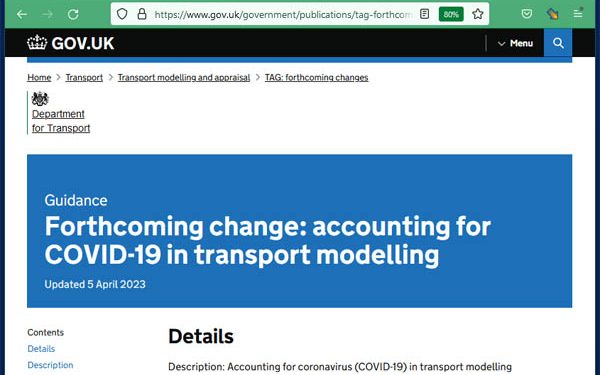
What’s the background?
Covid has caused a number of issues for demand forecasting.
Firstly, we rely on base year data, representing existing conditions, to understand travel patterns and as the starting-point for forecasts. This has to be reasonably up-to-date, normally within five years of today. Many transport models with 2015 or 2016 base years were due an update during the pandemic. But at that point, even if we could get out to collect data, it wouldn’t have reflected any kind of normal travel patterns. We’re now back to collecting data again, but it takes time to update models.

Secondly, even if we have a base year such as 2019 that’s still within its use-by date, is it still relevant for the post-Covid travel patterns? It’s not just about total volumes but also changes in trip purposes, origin/destination patterns and timing. For example, although total road traffic in Britain is back above 95% of pre-covid volumes, there has been less recovery in weekdays and car traffic, while weekends and goods traffic have recovered more strongly. The rail picture is also complex, as set out in an excellent piece by Paul Cooper.
Thirdly, even if we’re confident in our base data, there is uncertainty about the future:
- Are we now in a stable ‘new normal’?
- Will there be any further post-Covid recovery in volumes?
- Will long-term demand growth trends resume, or will new technologies and behaviours –perhaps accelerated by Covid – reduce the growth rates?
Thus Covid has highlighted the importance of scenario planning which, as a profession, we were just getting to grips with when Covid arrived.
Since then, and particularly as attention has turned away from immediate Covid responses and back towards long-term needs, we have been looking at how we reflect these issues.
Some authorities have produced their own post-Covid scenarios – on either a ‘best guess’ basis or a ‘what if?’ or sensitivity-test basis – particularly for rail demand. Others have stuck with the pre-Covid data, particularly for road traffic, partly on the basis that Covid has just delayed (not stopped) the growth curve that is driving many schemes.
DfT’s interim guidance issued in 2022 was to stick with the pre-Covid forecasts but use sensitivity tests to understand the impact of lower demand. They anticipated issuing further guidance once there was enough evidence to make a robust estimate of the long-term impact. And that’s what has now come out.
What’s the new guidance?
The new guidance applies to everything except rail demand modelling, which is covered separately by the DfT’s Demand Driver Generator (DDG) tools.
The guidance says that now is the time to start reflecting Covid impacts in core scenarios. In effect, 2023 is the new normal (my phrase, not DfT’s).
If you are already creating a new or re-based model with 2023 or later data, this will capture the Covid impacts: it will reflect the new normal.

If you have an existing model, the starting-point is to compare the modelled base trip matrices against up-to-date counts. If the differences are significant, you should ideally re-base your model – and again this will bring you to the new normal. If that’s not practical or proportionate, you can adjust your existing base. Here’s where it gets complicated.
Covid-adjusting an existing model
To adjust an existing base, DfT recommends adjusting the trip matrices, considering trip purpose and patterns as appropriate, to produce an updated core forecast. This could be based on national-level statistics or appropriate local data. It should take account of differences in trip patterns between purposes, user groups or modes where appropriate – for example, freight and personal travel have each responded differently to Covid.
The guidance offers three possible ways of doing this, which I’ve summarised in the table below, but other options may be acceptable too. You need to judge what’s most appropriate. Whatever the decision, the assumptions and evidence will need to be documented.
| Approach | Description | Pros | Cons |
| 1. Make today the new base year | Apply adjustments (based on observed data) to create a new base year. Then forecast as normal. | Allows validation checks against observed data | |
| 2. Make your scheme opening year the new base year | Apply adjustments, using any observed data or official statistics as far as possible, then account for further changes up to opening year (eg via NTEM growth factors). Then forecast as normal. | No need to create a new present-year base | No validation against observed data |
| 3. Use a global post-model adjustment | Make a consistent adjustment across all sets of model results. Should only be considered for quick, proportionate decisions – eg short-term projections that need regular updates. | Simplest method | Most risk – you’ve not actually modelled the changes in travel patterns |
Growing from the post-Covid base
So that’s the new base dealt with. What about growth rates? The guidance says to carry on using NTEM growth factors as usual. Although Covid may have changed trip rates, the growth rates are driven by underlying demographic and economic factors and DfT sees them as still being robust.
In effect, Covid is to be treated as a one-off ‘blip’ or ‘scar’ on the growth curve, with normal growth rates resuming from the post-Covid base.
Sensitivity tests
Sensitivity or scenario tests are seen as important, irrespective of whether the modelling is new, rebased or adjusted. These are to reflect the potential for further, longer-term impacts. The Uncertainty Toolkit and Common Analytical Scenarios (CAS) will be useful. (The announcement teasingly adds ‘this may be particularly relevant for certain modes’, without saying which ones – but that’s for another day.)
So what’s going to be different?
In some cases, not much. Smaller, local schemes are already being progressed using 2022 or 2023 count data, so Covid impacts are already factored-in to the core numbers. For larger schemes and general-purpose strategic models, some authorities and promoters are already taking the plunge and updating their models, many of which would in any case have needed re-basing by now due to their age. And there will always be the need for all-new models to meet emerging needs or take advantage of new approaches and data sources.
But for the next couple of years, perhaps longer, we will still be working with pre-Covid baselines in many cases. The guidance is heralding a new stage of thinking, where we will have to make some adjustments to create post-Covid core scenario forecasts, rather than use the old core and rely on sensitivity tests or alternative scenarios as a proxy for Covid impacts. Of course this is to be done proportionately, and where existing schemes are in the middle of a phase of analysis then the change might wait until the next phase.
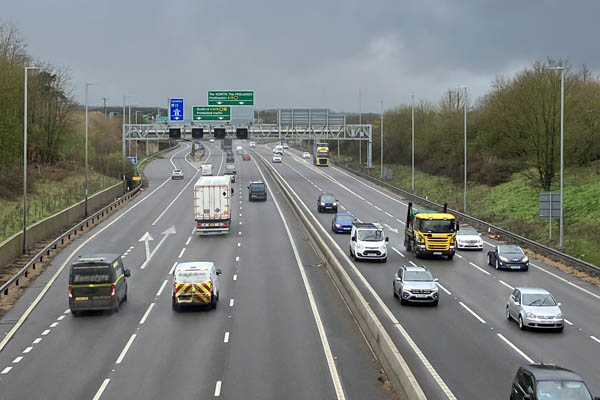
Does this mean the Covid impacts have all worked their way through?
Not necessarily. The guidance recognises that travel patterns may still be changing and that there may be longer-term effects too. The picture is particularly complicated for rail travel (which is outside the scope of the new guidance) and bus travel, which have wider issues than just Covid – but that’s a separate story. So we still need our sensitivity tests and alternative scenarios. Meanwhile, DfT is continuing to monitor the impacts and will update the guidance as required.
To my mind, the new guidance is a pragmatic approach that recognises where things stand. Travel patterns have settled-down enough, at least for road traffic, that it’s the right time to reset the baseline and gain the benefits of up-to-date data, although further adjustments may be needed over time.
See this post for some updates (August 2023).
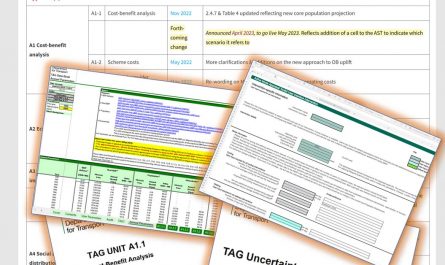
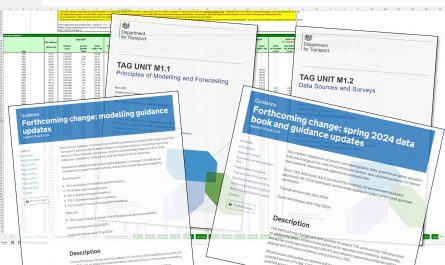
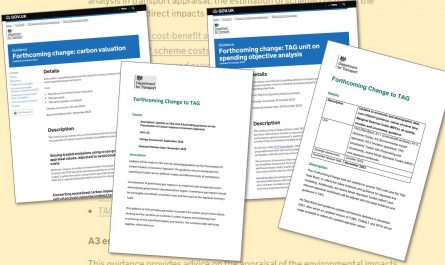
Thanks Graham, this is really useful. I think the DfT advice is helpful, particularly the alternatives to re-basing the model to 2023.
Purely from a practical perspective, if everybody tried to re-base all their models immediately to 2023, I think the data collection and modelling industry would be overloaded (and the resulting models would probably suffer).
Personally I’d always seek to start at the END of this process, with the simplest pre- and post- model adjustments. That provides us with the most efficient pathway: providing insights for the client and giving modellers a space to think about the best approach.